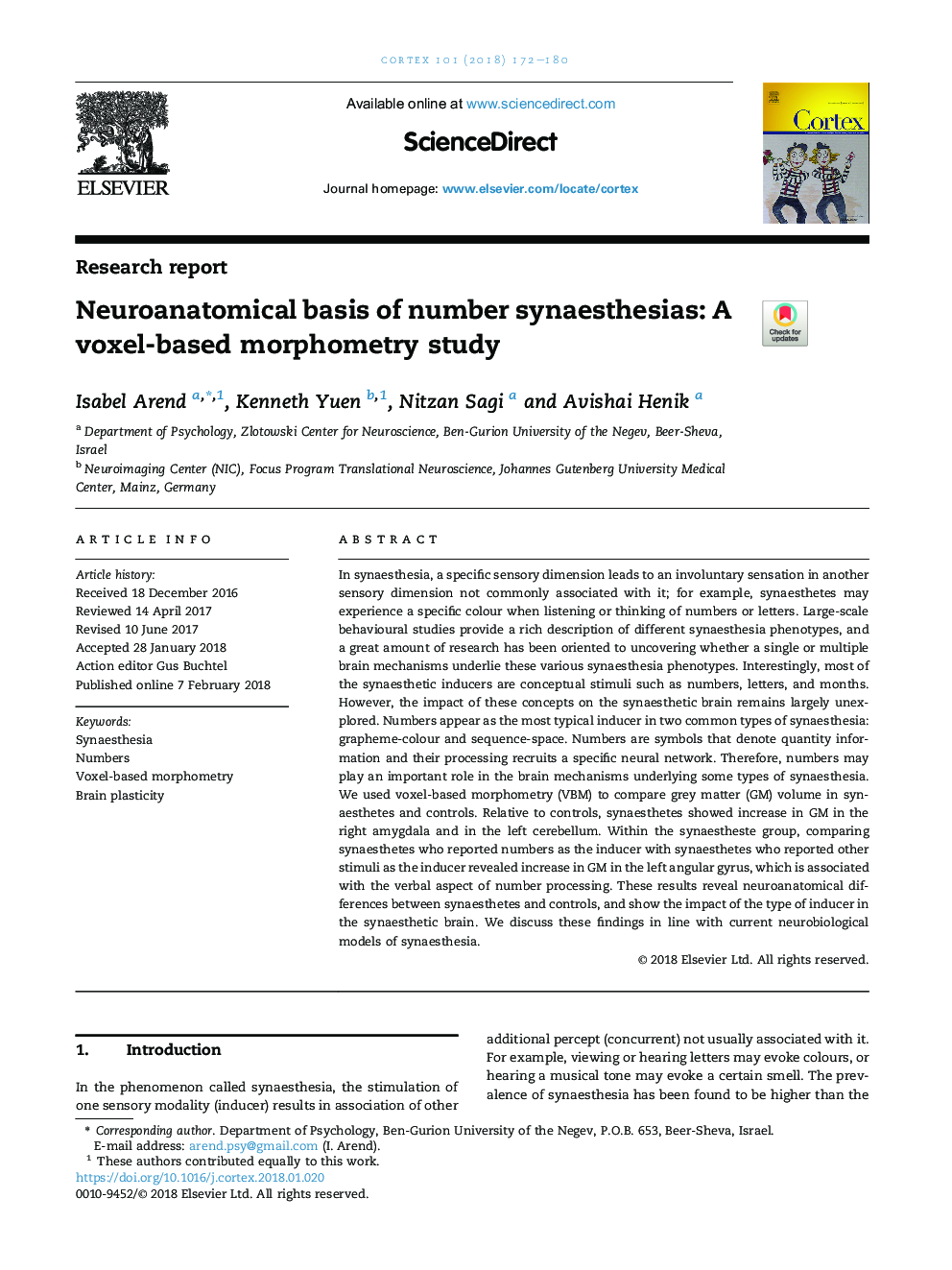| کد مقاله | کد نشریه | سال انتشار | مقاله انگلیسی | نسخه تمام متن |
|---|---|---|---|---|
| 7311817 | 1475431 | 2018 | 9 صفحه PDF | دانلود رایگان |
عنوان انگلیسی مقاله ISI
Neuroanatomical basis of number synaesthesias: A voxel-based morphometry study
ترجمه فارسی عنوان
اساس نوروآنتیومیک تعداد سیناستزی: مطالعه ی مورفومتری مبتنی بر وکسل
دانلود مقاله + سفارش ترجمه
دانلود مقاله ISI انگلیسی
رایگان برای ایرانیان
کلمات کلیدی
سینوشه، شماره، مورفومتری مبتنی بر وکسل، پلاستیک مغزی،
موضوعات مرتبط
علوم زیستی و بیوفناوری
علم عصب شناسی
علوم اعصاب رفتاری
چکیده انگلیسی
In synaesthesia, a specific sensory dimension leads to an involuntary sensation in another sensory dimension not commonly associated with it; for example, synaesthetes may experience a specific colour when listening or thinking of numbers or letters. Large-scale behavioural studies provide a rich description of different synaesthesia phenotypes, and a great amount of research has been oriented to uncovering whether a single or multiple brain mechanisms underlie these various synaesthesia phenotypes. Interestingly, most of the synaesthetic inducers are conceptual stimuli such as numbers, letters, and months. However, the impact of these concepts on the synaesthetic brain remains largely unexplored. Numbers appear as the most typical inducer in two common types of synaesthesia: grapheme-colour and sequence-space. Numbers are symbols that denote quantity information and their processing recruits a specific neural network. Therefore, numbers may play an important role in the brain mechanisms underlying some types of synaesthesia. We used voxel-based morphometry (VBM) to compare grey matter (GM) volume in synaesthetes and controls. Relative to controls, synaesthetes showed increase in GM in the right amygdala and in the left cerebellum. Within the synaestheste group, comparing synaesthetes who reported numbers as the inducer with synaesthetes who reported other stimuli as the inducer revealed increase in GM in the left angular gyrus, which is associated with the verbal aspect of number processing. These results reveal neuroanatomical differences between synaesthetes and controls, and show the impact of the type of inducer in the synaesthetic brain. We discuss these findings in line with current neurobiological models of synaesthesia.
ناشر
Database: Elsevier - ScienceDirect (ساینس دایرکت)
Journal: Cortex - Volume 101, April 2018, Pages 172-180
Journal: Cortex - Volume 101, April 2018, Pages 172-180
نویسندگان
Isabel Arend, Kenneth Yuen, Nitzan Sagi, Avishai Henik,
